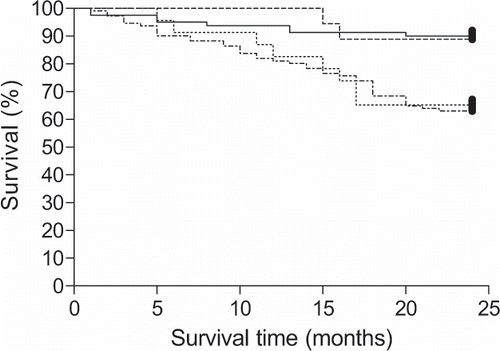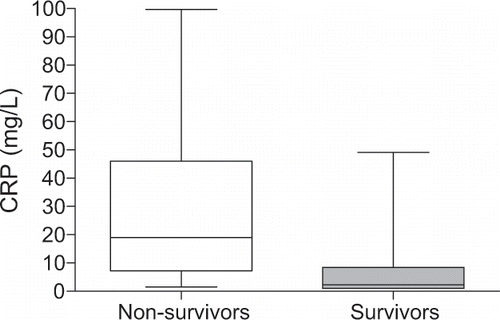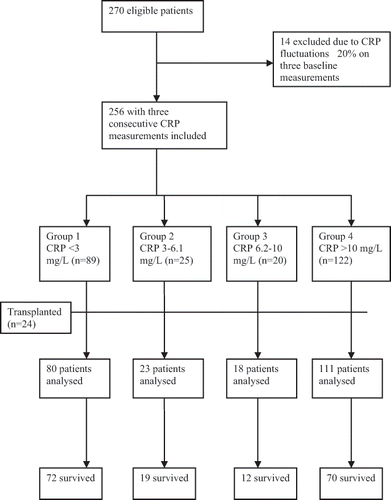Figures & data
Table 1 Characteristics of 256 chronic hemodialysis patients enrolled in the study
Figure 2 Receiver operating characteristics (ROC) curve for C-reactive protein (CRP) as a predictor of death. Area under curve was 0.843. Data for C-reactive protein values were collected from 232 maintenance hemodialysis patients. The CRP cutoff value where the sensitivity and specificity were the highest (80% and 70%, respectively) was 6.2 mg/L.

Table 2 Causes of death in 59 chronic hemodialysis patients during two-year follow-up
Table 3 Distribution of cardiovascular and non-cardiovascular causes of death according to the baseline serum concentration of C-reactive protein (CRP) in 59 chronic hemodialysis patients who died during two-year follow-up
Figure 3 Kaplan-Meier estimates of survival of hemodialysis patients during two-year follow-up with respect to all-cause mortality and serum concentrations of C-reactive protein (CRP). Significantly higher mortality was observed in patients with CRP >6.2 mg/L. Dashed line: group 1 (CRP <3.0 mg/L); full line: group 2 (CRP 3.0–6.1 mg/L); dotted line: group 3 (CRP 6.2–10.0 mg/L); dot-dash line: group 4 (CRP >10.0 mg/L). p<0.001 for group 3 vs. groups 1 and 2 and for group 4 vs. groups 1 and 2.

Figure 4 Mean values and distribution of C-reactive protein (CRP) in 173 survivors and 59 non-survivors at the beginning of hemodialysis treatment. Median serum concentration of CRP in non-survivors was significantly higher (open box) than CRP concentration in survivors (full box): 19.0 (1.5–99.7) mg/L vs. 2.3 (0.1–49.1) mg/L, respectively. p<0.001, Mann-Whitney U test.

